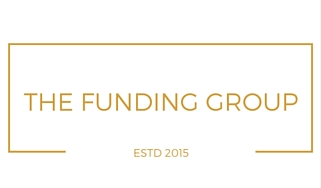As long as you balance risk and reward, borrowing money from others to purchase a rental property is a great way to increase your potential returns.
This blog will discuss the various options available for obtaining a loan to rent property. We’ll also talk about how to evaluate cash flow and property values to help you make the right investment decision.
How Rental Property Loans Works
A rule of thumb is that residential rentals require higher down payments and have slightly higher interest rates. Rent property loans can still be fully amortized over 30 year so the monthly payment amount remains the same. This makes it easier to create a cash flow pro forma.
Lenders view investment property loans to be more risky than a mortgage for a homeowner-occupied home. This is why down payments and interest rates are higher. Banks have learned from experience that investors are more likely to leave the bank if things don’t go according to plan.
The terms of a rental property loan may be more favorable to the real estate investor. Investors can deduct interest payments from their taxes.
A larger down payment results in a lower loan to value (LTV), with a lower mortgage debt servicing payment amount, and possibly increased cash flow.
While every Beverly Hills Mortgage Broker is different, these are the most common requirements for applying for a residential loan.
- Credit score minimum of 620
- Maximum 36% debt-to income (DTI) ratio
- Based on the property type, borrower credit and down payment amount, 25% or more
- Lenders are required to pay slightly more for loan fees and interest rates in order to offset additional risk.
- PMI (private mortgage insurance), is not available if the down payment exceeds 20% (LTV less than 80%).
- The borrower must have enough cash reserves to cover six monthly mortgage payments
- Residential rental property loans are available for single-family and small multifamily homes, condos and townhomes.
Options to get a rental property loan
It is much simpler to find a loan option to finance a residential rental property such as a house or duplex than a large apartment building, or commercial property.
These are the options available to you if you need a loan to buy a rental property, or refinance an existing mortgage.
Conventional
Conventional or conforming mortgages are the most familiar type of mortgage. These loans are available from traditional lenders such as banks and credit unions. Beverly Hills mortgage brokers can also offer them. They work with many lenders and can help you get the best deal.
If you have good credit, interest rates will be lower than other options. Down payments might be less than 25%.
Conforming loans must meet Fannie Mae or Freddie Mac guidelines. Fannie and Freddie allow a maximum of 10 mortgages per borrower. However, banks will often limit the amount to four total loans.
FHA
Traditional lenders and mortgage brokers can also offer Federal Housing Administration (FHA), loans. A conventional loan will require a lower credit score and down payment. Income from an existing rental property may also be eligible.
Multifamily property investors who are looking to purchase a property, renovate an existing one, or make a new construction can use FHA loans. An investor must use at least one unit as their primary residence to be eligible for an FHA multifamily loann.
VA
Multifamily loans from Veterans Affairs ( VA) are another option for renting property loans that can be offered by banks and credit unions as well as mortgage brokers. The U.S. Department of Veterans Affairs provides mortgages to eligible spouses, active-duty military personnel, veterans and their families.
If you are eligible, there are many benefits to using a VA Loan for a Rental Property. You can purchase as many units as you like, with no minimum down payment and no credit score requirements. One unit must be your primary residence.
Portfolio
Portfolio loans are mortgages that can be used to finance individual properties, whether they’re single-family homes or multi-family. They are typically provided by the same lender. While each property is eligible for its own loan, private lenders and Beverly Hills mortgage brokers may offer a group discount to borrowers who apply for multiple loans.
The terms of the loan, such as the interest rate, down payment and credit score, can be tailored to meet the needs of each borrower. Portfolio loans are easier to get if an investor owns multiple properties. However, prepayment penalties and fees may be higher.
Blanket
Real estate investors looking to buy multiple rental properties can use a blanket loan to finance them all using one loan. They also have the option of refinancing existing rental properties or purchasing new rental properties. Private lenders and mortgage brokers are two options for finding a blanket loan to finance any income-producing property.
Lenders can vary on the terms of the loan. The interest rate, length, down payment and credit score of borrowers will differ. Loan terms can be tailored to suit the borrower’s needs.
Rental properties in a blanket loan are usually cross-collateralized, which means that each individual property acts as collateral for the other properties. You can request a release clause to allow you to sell any of the properties in the blanket loan, without needing to refinance them.
Private
Experienced real estate investors and businesspeople pool their capital to offer private loans. These private investors are familiar with the real estate industry and can offer customized loan terms and fees to suit the borrower’s experience and deal potential.
Private lenders might even accept a small percentage of the project’s equity in return for lower interest rates or fees. Private lenders may also be a great source of financing for future rental properties if the investment goes according to plan.
Seller Financing
Sometimes sellers who are able to lend money to buyers because they own the property in full (or have very little mortgage debt) may be willing to do so. Property owners who finance a buyer’s sale can earn interest income by offering financing or seller carryback. Instead of getting the entire proceeds in one lump sum, they can also generate regular mortgage payments and earn an ongoing monthly mortgage payment.
Owners who wish to spread capital gains and tax payments over the loan’s life can use seller financing. This is an alternative to a 1031 tax deferred exchange.
The seller may offer a mortgage but borrowers should expect the same underwriting requirements, such as credit checks, and a minimum down payment.
HELOC
There are two ways to pull money from an existing property in order to pay down a rental property loan. A home equity line-of credit (HELOC), and a home equity loans. This is an example for the waterfall strategy, where investors use cash flow and equity built-up from rental properties to finance future purchases.
HELOCs are a line of credit that is secured by equity in a property. Investors can access the equity at any time and pay the loan monthly, much like a credit card. A home equity loan, on the other hand is a second mortgage that provides funds in one lump sum to the borrower.
Lenders generally limit borrowing to 75% to 80% of property equity with both a HELOC or a home equity loan. The fees and interest rates may be higher than if you are refinancing your property with a conventional loan.

